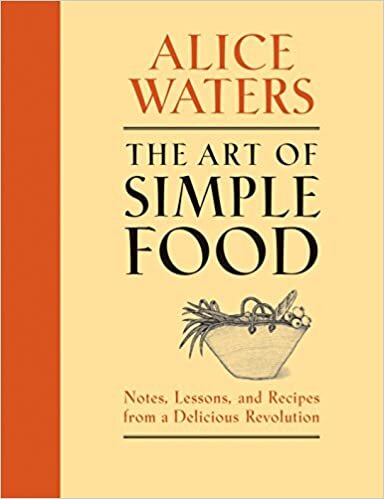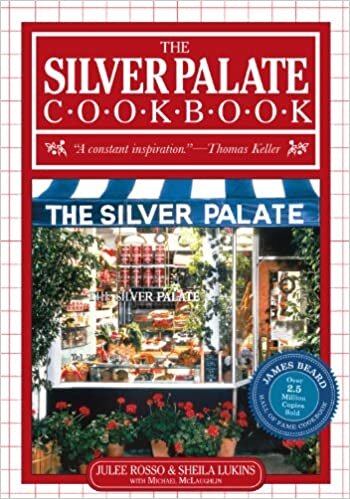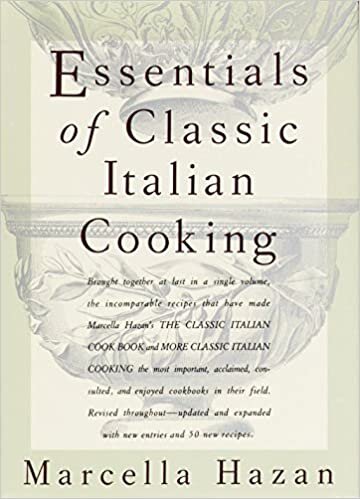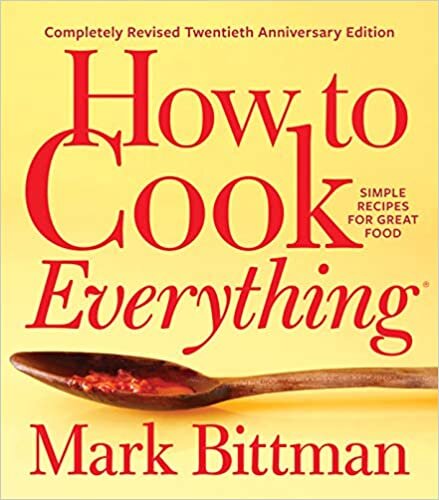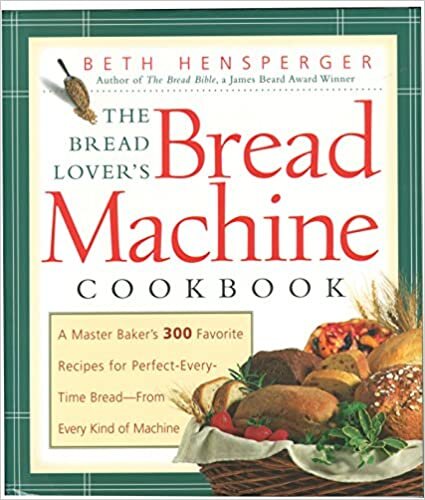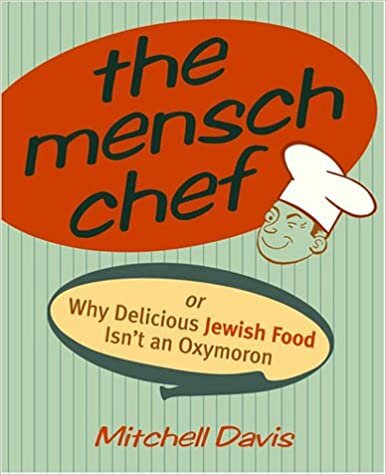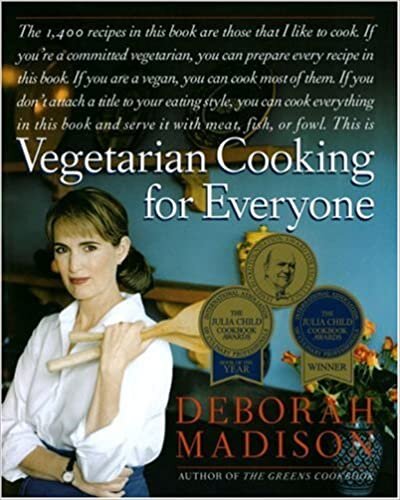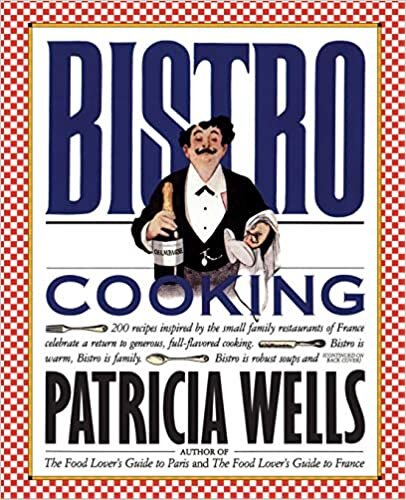Don’t be a dope like I was. If you want to cook amazing meals and you’re not a natural in the kitchen, use excellent recipes.
Some cookbook authors test and retest every recipe until the formula is just right, and they work with strong editors who make sure the recipes are easy to follow. Other recipe writers simply jot down instructions without much more work than that.
Plenty take an in-between approach. Don’t waste your time. I’ve been cooking for 30 years now and have come to trust the authors and cookbooks listed below. I’ve bought three and four copies of some of these cookbooks for myself over time because I wore out the originals.
Hint: The best cookbooks are generally written by professional cookbook authors who have mastered the art of creating recipes the rest of us can use. Most chefs don’t speak that language, and therefore their cookbooks don’t work for home cooks who, like me, want clear, foolproof instructions. Here’s an example: A chef might start a recipe with, “Caramelize an onion.” A quality-oriented cookbook author will spell out how to caramelize an onion, step by step, specifying what type of onion to use, how to cut it, what size pan to put on the stove, how the flame should be and so on.
Essential Cookbooks—How to Cook Everything
When I realized I had to step up my cooking game if I wanted my then-new husband to eat what I made, I stumbled in every culinary way possible. A book called How Cooking Works by Sylvia Rosenthal was my first apt teacher. I adhered to the visual and written guide about how to truss a turkey so often that, today, the book automatically opens to that page. The tome is still a valuable primer, but my new go-to is How to Cook Everything by Mark Bittman. I discovered this author two decades ago when my local newspaper ran his potsticker recipe. Now I have the book and the app, and I buy both together for the 20-somethings in my family when they get their first apartments.
How to Cook Everything takes a no-stress approach. So it’ll tell you how to, say, make spaghetti and meatballs, but the tone is, “Don’t worry, you’ve got this.” The index is thorough, so if you’re stumped as to how to use the asparagus in your fridge, or whip up a salad dressing, or you want to build around the dill you bought in bulk at a farmers market, you’ll find the recipes easily. I promise this is the one cookbook you will keep in the kitchen and use until it falls apart. The app will help in the supermarket when you see a great sale on pork and want to find a recipe and then buy all the ingredients. When I wanted to replicate the cold cherry soup my kindly neighbor used to make, there it was, in print, and Bittman’s version is a stunningly refreshing summer pleaser. The chicken adobe is excellent as an easy weeknight dish yet wow-y enough for company.
Bittman has simplified and de-stressed his recipes even more in How to Cook Everything Fast, which rebuilds his recipes for the way we all actually cook: While the oil is heating in the pan, grab the next ingredient and chop it, and while that browns, run and get the salt. I haven’t seen the book in person. I think it’s probably what I should be buying the kitchen newbies instead. But I haven’t tested it.
Quick addition: I got a gas grill a year ago and wanted to fire-sear something other than hamburgers and hot dogs. I bought several specialty books and learned nothing. Then I splurged on How to Grill Everything, another Bittman winner. I can toss the other books into the flames. Bittman keeps the important stuff simple—steak gets salt and pepper and honestly needs nothing else. Yet he offers up sauces and marinades for items that pack the most impressive punch. I keep a bookmark on the Swordfish in Salmoriglio page. Lemon juice, oregano, parsley, chile flakes … healthy, a cinch, and incredibly delicious.
The only Mark Bittman cookbook I don’t love is The Best Recipes in the World. I make the American-friendly kung pao chicken often, but mostly the book feels thrown-together to me.
Essential Cookbooks—Essentials of Classic Italian Cooking
You’ll realize as you read on that I tend to choose recipes that are high in flavor and low in fat. Other than desserts, I tend to opt for meals that naturally use olive oil, not butter or cheese. I also pine for Italian food. The late cooking instructor Marcella Hazan combined older cookbooks of hers into this one immediate masterpiece, Essentials of Classic Italian Cooking, back in 2012. I haven’t stopped using it since. Most of the recipes have few ingredients, and are high in olive oil, garlic, herbs and lemon—healthful and vibrant. Try the chickpea soup; it’s even good with canned vegetable stock if you’re stuck. The grilled shrimp skewers always please, even if cooked stovetop on a ridged pan, or broiled. The oven- and pan-roasted chickens with rosemary, the chicken cacciatore (I prefer the New Version), the lemony swordfish, the veal scallopini, all the veal stews, the sauteed spinach … it’s a book filled with recipes you will make repeatedly, even after a full day of work.
Essential Cookbooks—Bistro Cooking
I’m not a fan of fussy French food, yet my husband likes all his entrees with sauce, and French sauces topped that list in our early years, before he discovered the worlds of Asian cuisines. He got little of the frou-frou French stuff at home until I stumbled upon Bistro Cooking. Author Patricia Wells created this book by asking the chefs at humble French bistros for specific recipes, then translating the instructions into usable versions that American home cooks can follow.
The results are brilliant, in a non-intimidating way. Suddenly I was a star with a wooden spoon, serving a wildly lauded chocolate mousse, upside-down pear tart and nearly flourless chocolate cake. The Baker’s Wife’s Potatoes are a great company dish that pairs with any meat. Wells’ chicken and rabbit stews (I use chicken for all of them) have mustard sauce, or mushrooms and thyme, or a fricassee with mushrooms, or shallots. You can’t go wrong. And, if you make it a day ahead, the Provencal beef stew with a strip of orange zest is a cold-weather wonder.
This is French food for the rest of us, absolutely authentic and anything but fancy.
On a side note, I was once sent French Classics Made Easy by Richard Grausman. It was a lifesaver the time I had to make a huge batch of coq au vin for a fundraiser. The recipe was far easier than the three-day versions I found elsewhere, yet the flavor and presentation were right-on. I’ve made it since, using the just-for-us original recipe. And the book’s quiche Lorraine was the sensational centerpiece for a ladies’ lunch here at home. Grausman’s illustrations for How to Line a Tart Pan were instructive, and the filling was rich and tasted just like what I’d eaten abroad. My only beef: Physically, the book isn’t well-made. Chunks of pages have unattached themselves. Clearly the publisher took used cheap glue.
Essential Cookbooks—The Silver Palate Cookbook
Oh how I’m dating myself by featuring The Silver Palate Cookbook. This paperback was the cookbook of a certain era, spurred on by an exceptional take-out shop on New York City’s Upper West Side. Some recipes have branded ingredients you likely can’t find anymore like blueberry vinegar or somesuch. Buy the book anyway. The authors, Julee Rosso and Sheila Lukins, wrote excellent, usable recipes for what were in the ‘90s modern American classics. The recipes hold up gloriously today. The curried butternut squash soup is our family must-have starter for Thanksgiving. Chili for a Crowd, which I cut with half ground turkey, works for a party every time. Crudites—raw vegetables with dip—were all the rage at the time. To this day, when I serve the now-dated party pleaser I always use Silver Palate’s avocado, Roquefort or green peppercorn mustard dip. (Water-packed green peppercorns are hard to find but any peppercorns work fine, really.)
Silver Palate desserts are reason alone to buy the book. They’re organized terribly; I can never find what I’m looking for. But the recipes are there: pecan squares, butterballs, toffee bars, chocolate peanut butter bites (no baking!), and the only carrot cake recipe you will ever need.
The second book in the series wasn’t as good.
Essential Cookbooks—Vegetarian Cooking for Everyone
Whether your a vegetarian or just want vegetables to be splendid when you serve them, Deborah Madison’s Vegetarian Cooking for Everyone has what you need. The book itself is huge and intimidating. Just take it step by step. First off, if you want a vegetarian entree or side dish friends will talk about the rest of their lives, make the Winter Portobello Mushroom Stew. That requires first making a double batch of the Quick Mushroom Stock, so overall this is a time-consuming endeavor. Sooo goood. Or just turn to “broccoli rabe’ and make her take, with garlic and red pepper flakes. I don’t remember what else I’ve toyed with, but the beets with cilantro and mint look tempting, as do a host of quinoa dishes. Guaranteed, some of the 1,400 recipes will grab you.
Essential Cookbooks—The Mensch Chef
The Mensch Chef has great Jewish recipes, but you’ll love the collection even if author Mitchell Davis’ Yiddishisms mean nothing to you. I tried new brisket recipes twice every year before I happened upon his Basic Brisket. Now I make this version for every Jewish holiday. It has no ketchup or onion soup mix or other chemical concoction, just mushrooms and tomato paste, for the most part. I put in extra mushrooms and garlic, and skip the granulated garlic. You stick it in the oven for three hours, slice it up (I’m too lazy to slice it midway as Clark suggests, although I know that would be better), then serve the finished dish three days later. And the hamenstaschen, which are triangular jam-filled pastries? The Mensch’s are hard to make because the crust is so buttery. Worth it. This recipe makes four dozen stupendous hand-held pastries. My advice: Refrigerate the dough for at least an hour before you roll it out. Have Valium on hand.
Essential Cookbooks—The Bread Lover’s Bread Machine Cookbook
Go ahead. Make fun. Some of us simply won’t do the mix/knead/rise/repeat business for a loaf of bread when artisan bakeries turn out such wonderful alternatives. Pop ingredients into a bread machine, though, and you can get all kinds of aromatic and satisfying loaves without stress. I bought a bunch of cookbooks back in 2009 when I purchased the Zojirushi BBCCX20 Home Bakery Supreme Bread Machine; bread machines were a gadget fad at the time and I recommend this machine, which is as good as it was brand new. (This seems to be a newer version.) My breads were nothing impressive, though, until I bought The Bread Lover’s Bread Machine Cookbook: A Master Baker’s 300 Favorite Recipes for Perfect-Every-Time Bread—For Every Kind of Machine by Beth Hensperger.
Bingo. These recipes work. They’re diverse, they’re interesting, and I’m always eager to try a new one. I go the Dakota route when I want a hearty whole grain seed-and-nut affair. For a gentler whole grain bread, I opt for the Buttermilk Whole Wheat. The rosemary-lemon bread is aromatic and lovely, the pizza dough (and the pizza sauce) just right, the whole-grain daily bread with quinoa nearly a meal in a single slice, and there’s one with hazelnuts … that one took extra work but the flavor was miraculous. I can’t find it though. The book is thick and unnwieldy.
Essential Cookbooks—The Art of Simple Food
I’m embarrassed to say I’ve used The Art of Simple Food less than the books above, but not because it’s not wonderful. It is a bible, if a rarely used one, in my kitchen. Alice Waters, the pioneer of California Cuisine, is renowned for her use of fresh and locally raised ingredients, which prepared correctly create the best foods you’ll ever eat.
Here she tells you how to do what she does. You may not have California farm food near your home, so do the best you can sourcing free-range eggs and tender just-picked eggplants from farmers markets or at least specialty grocers. Then follow Waters’ steps to have a perfectly boiled egg, a fragrant beef stew, a roast leg of lamb or the Chocolate Crackle cookies. The cookie recipe makes only a small batch, but these are the ideal cookies in taste and texture. They’re worth any extra bit of work.
That’s it. I keep purging cookbooks, and have plenty more, yet I rarely touch the others. To be fair, I also use New York Times Cooking recipes, and some from Epicurious.com and Saveur.com. I trust few other sources. Now I’m to set a Parmesan-nut bread in motion.
In the comments section, please share the names of your favorite cookbooks and explain what you like about them. This is need-to-know information, in my world. Let’s share what works.
